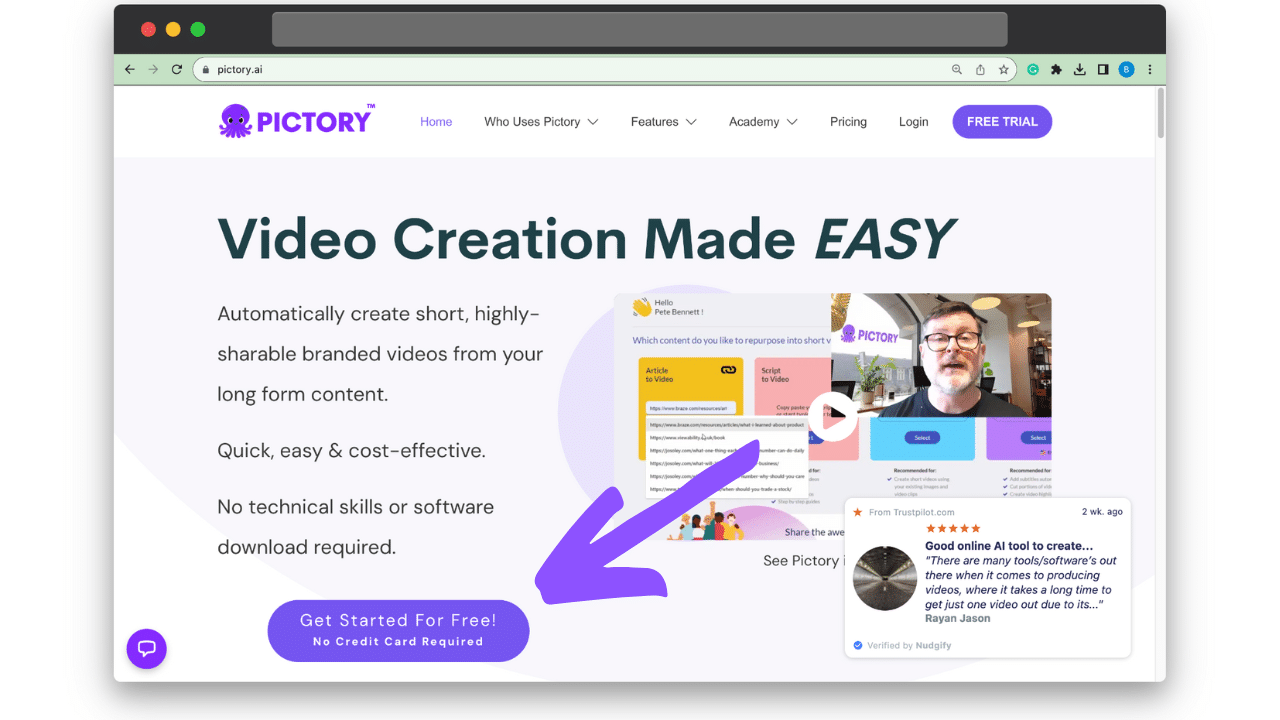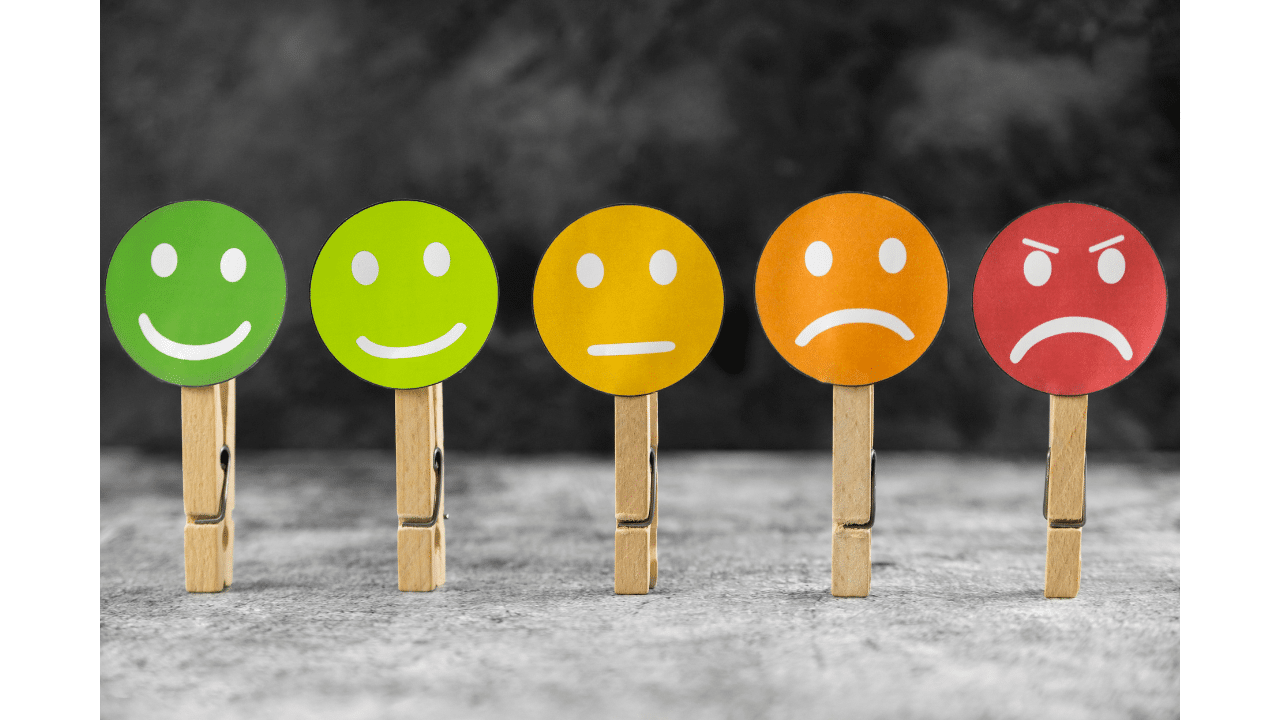Though the dominant social media platforms continue to shift their offerings each year, writing strong social copy remains one of the most important parts of an effective content strategy.
It helps hook an audience in, influences how social posts are handled by app algorithms, and provides a vital opportunity to encourage more engagement on other content, such as a business’ website.
The varied marketing purposes a well-crafted caption can fulfill is also why writing them can be tricky for even the most seasoned social media marketer.
To help the process, we’ll be sharing our top tips on writing engaging copy as well as a few best practices for creating a brand style guide that works across different platforms and posts.
Whether you’re writing for LinkedIn or Facebook, we’ve got everything you need to know right here.

Sign up for a FREE trial of Pictory here and revolutionize your video marketing strategy.
Creating a Style Guide for Social Media Copywriting
Like anything in content marketing, the best work is done with a clear strategy behind it.
To make things easier as you shift between social media platforms, it’s helpful to create a style guide that can be referred to at any time.
Here are some key factors to include:
Target Audience

The first step for any content strategist is to paint a clear picture of who their content is aimed at.
The tone and language choices of your social copywriting must be guided by the ideal audience you’re trying to reach.
For example, the language used to reach teenagers will be very different from the copy that engages people in their 30s.
On the other hand, If your brand is trying to be more generally appealing then eliminating age-specific colloquialisms is important.
Location is another defining factor of a marketing audience.
If you’re a small business with a local audience, define that early on so that you can make sure to use language and references that draw them in.
Brand Voice

Online marketing is a saturated space.
There is no end to the businesses vying for people’s attention.
Standing out in all that noise demands businesses to have a strong brand voice and personality.
Each brand has its own perspective to offer.
Focusing on that unique viewpoint, alongside the language and topics that most concern your business, is a way to define a clear brand voice that can be used across social media copy to show people who you are.
Depending on the social media channel you use, different approaches will be required as they access different audiences and have their own formats, but keeping your brand voice consistent throughout is vital.
It ensures that no matter which platform or post users click on, they’re able to pick your business out from the crowd.
Products and Services (and a Signature CTA)

Social media marketing efforts are, at the end of the day, about trying to sell an audience something.
It may be a product, a service, or an idea.
Whatever it is, make sure to develop clear language early on regarding how you want it represented in your social media copy.
This makes it easier to stay on-brand with your messaging.
Next to consider is making it clear to people how they can access your business material with a call to action (CTA).
For example, “Click the link in bio to view our YouTube channel”.
Wherever it is that you’d ideally like to guide people with your copy, be it a blog post or a product, use the CTA as the direction to that point.
Developing a few signature CTAs in your brand guidelines makes it easier to use them repeatedly and helps bring your social media copy back to the main idea: encouraging people to use and engage with your business.
Tailor Copy to Different Social Media Channels
Different social media channels have different dominant audiences and posting formats.
For the sake of staying relevant on the different platforms, it’s worth tailoring your social media copy to the specificities of each.
Let’s break it down:

Instagram:
Copy on Instagram Stories tends to be quite casual and leans more toward daily updates and links.
A post can include text of up to roughly 350 words but it’s better to keep things briefer.
The largest age group is 18-24 and split fairly evenly between genders.

Facebook:
The audience skews slightly older on Facebook than on Instagram with active users usually aged 25-34.
A post can be up to 60 000 characters but here again, briefer is better.

YouTube:
Besides video titles, copywriting on YouTube is limited to accompanying video post descriptions (max 5000 characters).
This is a good place to share other content, affiliate links, and any other key information regarding the video.

LinkedIn:
Text posts have a limit of 3000 characters and the audience is mostly in the 30-39 age group.
It’s unique from other channels in that most users are business professionals, which allows for a more formal tone than Instagram, for example.
Because of the way the platform is formatted, the copy needs to include an eye-catching headline.

X (Twitter):
The audience on Twitter skews heavily male (61% of the audience share), with 42% of the platform being 18-29 years old.
It’s a very text-heavy platform and though longer posts are now possible, Twitter remains a place where short, sharp copy performs the best.

TikTok:
Accompanying captions on this platform are barely visible and more of a chance to include a CTA or hashtags than anything else.
If you’re still not sure where your content is best suited, find out Which Social Media Platform Is Best For Your Business here.
Research Hashtags for your Copy
All the platforms we’ve mentioned make some use of hashtags to organize content for users.
As such, it’s useful for businesses to research and decide on key hashtags to feature in their social media copy.
Trending topics week to week may change what hashtags to use but every business should have a few core examples to go back to.
Organic vs. Paid Content
Organic and paid content have slightly different demands in terms of social media copywriting.
Chief among them is that paid content needs to get to the point much quicker.
A strong ad headline and bolding key text will also help grab the audience’s attention.
Make it clear in your copywriting style guide what differentiates your organic content from paid ads in terms of focus and storytelling.
We’d always recommend that paid posts be product or service-forward so that you get the most for your ad spend.
10 Tips for Writing Copy That Engages Social Media Users
Writing compelling copy across multiple different channels is no mean feat.
That said, here are some key tips to make your social media copywriting and marketing efforts a little easier:
1. Attention!

Most of us have pretty limited attention spans so when trying to grab the attention of your audience, lead with the most exciting bit.
Find the main idea that’s going to grab their attention and place that front and center of your copy.
On an Instagram post, that might look like asking a provocative question in the first line of a caption whereas on YouTube, it’s about having a juicy title.
Think about what would catch someone’s eye as they’re scrolling through an app, especially on places like LinkedIn or X (Twitter) which places text captions above the images and are the thing most likely to make someone pause.
2. Solve a Problem
The trick with content marketing is to sell your audience something without making them realize that’s what’s happening, especially with organic posts.
One of the ways to do this is by writing copy that simultaneously addresses customer pain points, while also positioning your business as key to the solution.
Acknowledging pain points like this conveys value beyond just the product at hand and allows brands the opportunity to show how they fit into the daily needs and struggles of their audience.
3. Get Emotive

Social media copywriting that can evoke emotion is so much more likely to hook an audience.
As this article from various industry experts on the Harvard Business School site outlines, emotion leads to engagement.
Internet outrage and its ability to garner massive clicks have long been documented.
But for businesses trying to write copy that both reflects well on their brand and engages an audience, we’d argue for a less divisive approach.
Sometimes that simply means finding the humor in something and creating a post that makes someone laugh.
Anything that provokes a strong, positive emotional response will help draw attention to your post and in turn, your business.
4. Make Use of AI

AI platforms can be great tools for speeding up the copywriting process or for simply sparking new ideas on what to focus on next.
That said, with so many businesses using them, it’s important to add a personalized flair to AI copy so that your distinct brand voice is still recognizable.
5. Keep Copy Brief (and Well-Written)
Whether you’re writing short-form or long-form content, keep it brief.
That might sound a little contradictory but what we mean by it is that whether your post is 100 characters or 1000, it needs to get the point quickly and be able to hold attention throughout.
It also needs to be well-written.
Even the New York Times has typos and grammatical errors on occasion but it’s best to check and triple-check copy so that they’re a rare occurrence, otherwise, it can imply a level of carelessness.
Try to keep language plain too.
Clear, simple language is easier to follow and more inclusive.
The only exception to this is with very niche audiences where something like the use of industry-specific jargon helps engage your target market and show off your expertise.
Another tip for better social media copywriting is to always stick to the active voice.
It’s far more engaging and immediate than the passive voice.
Using the active voice also helps you stay conversational with the copy, which is important no matter whether it’s X (Twitter) or Facebook you’re wanting to post on.
6. Check Your Social Media Insights and Performance
An essential part of any social media copywriting approach is constantly going back to check on what your least and best-performing posts were.
You can judge this by views, likes, or product clicks, but we’d also recommend combing through the comments section in your research.
Sometimes a post doesn’t get the highest views but it manages to engage people in the comments and point to an area that a business can tap into more.
7. Create Post Templates
One of the best ways to make social media copywriting easier and more efficient is to take those well-performing posts we just referred to and make templates from them so that you can recycle the same content.
Perhaps you notice that posts with questions do well and that people enjoy answering them in the comments.
Maybe there’s a certain topic that, whenever alluded to in a social media post, brings traffic to your website.
Whatever it is, find the trends in your posts with the most engagement and replicate them as much as you can.
8. Use Storytelling

A fact that’s been true for eons before social media copywriting even came into existence is that people love a good story.
A great approach for organic content is to tell some kind of story, be it about your brand, a new product, or even a customer that you’ve engaged with recently.
Narratives capture people’s attention.
Even a simple Facebook post can be elevated by a good story, well told.
9. Match the Visual in Your Social Media Post
Most social media platforms are dominated by visual content and the copy used as the accompaniment.
Good social media copywriting doesn’t resist that fact.
Instead, it links the text to the visual so that a larger story can be told.
10. Let Pictory AI Handle the Visuals for your Copy

Of the visual content online, more than 54% of social media marketers say that video is the most valuable.
Creating video content has traditionally been a hugely time-consuming activity that steals away from other areas such as copywriting.
However, with Pictory, our AI features automate the video-making process so that you can focus on the words.
Juggling social media content on multiple channels and all the copywriting considerations that come into play with that is demanding enough.
Sign up for a FREE trial of Pictory so that we can help you save time and money making video content.
Then you’re free to focus on finding the best, most emotive ways to connect your copy with your social media audiences.





